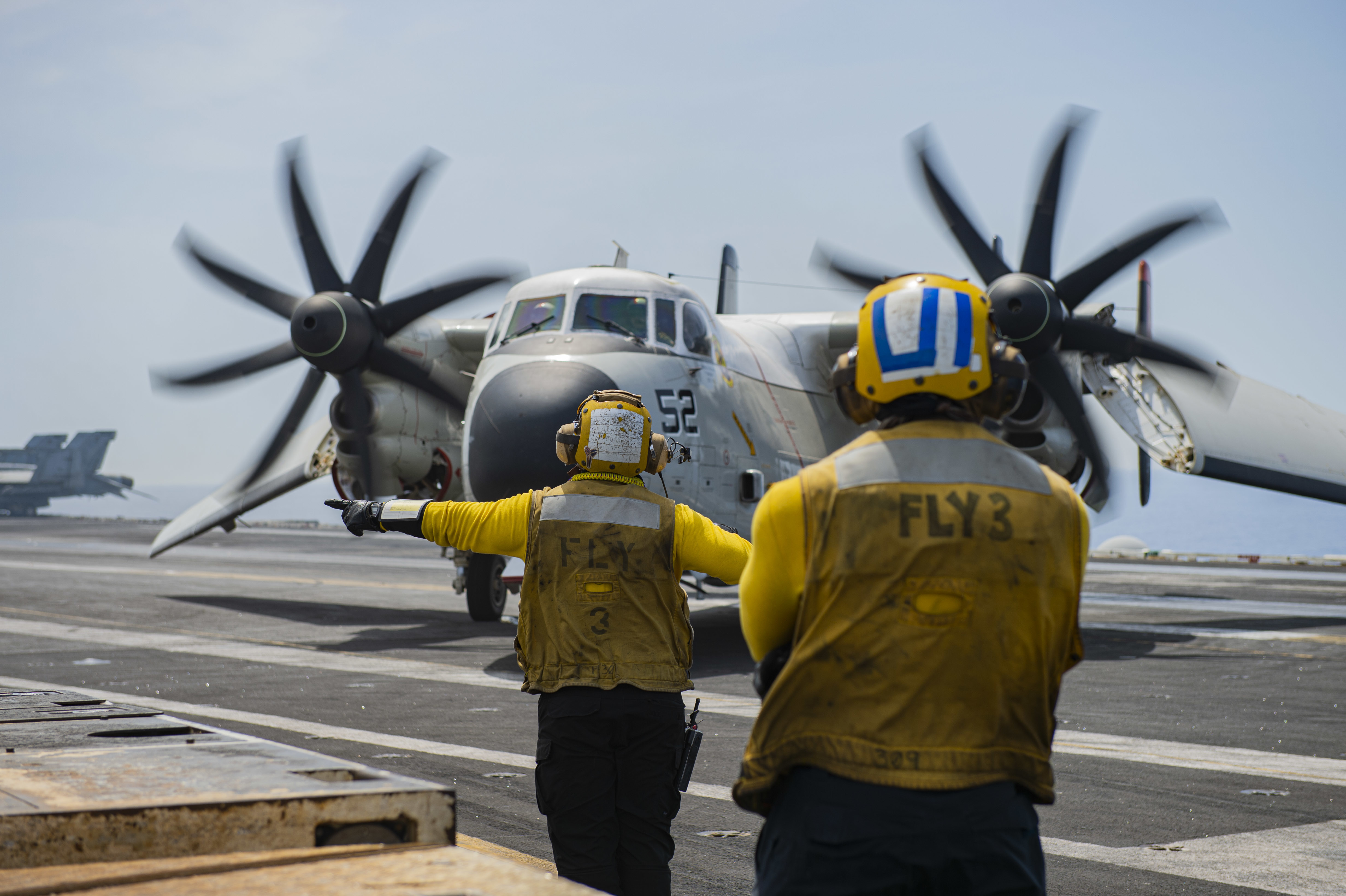
NATIONAL HARBOR, Md. – Carrier USS Harry S. Truman’s (CVN-75) extended deployment in response to Russia’s invasion of Ukraine in 2022 identified logistics problems that can arise when the wrong stores are on board ships, the commander of Military Sealift Command said Tuesday.
Rear Adm. Phillip Sobeck said “bureaucracy took over” in what needed to go aboard “prior to deploying the ship, in my opinion.” Speaking as part of a contested logistics panel at the 2024 Navy League Sea-Air-Space Exposition, he said, “we sent the wrong thing in some cases.” In other cases, not knowing what was in the pallets aboard ship was a factor.
“The system [from what’s needed to what’s going where in what quantity] needs to understand itself,” he added. Sobeck said the Navy is working with Defense Logistics Agency on fixing the problems.
The era of free-flowing supplies – from fuel to medicines – to strike and readiness groups at sea, Marines operating from expeditionary advanced bases and aviation units is over, panelists agreed.
“We’ve got to understand ourselves if we’re going to keep speed, scale and tempo” with operational forces in their response to crisis or conflict, Sobeck said. “We’ve got to be data-driven” to “have the fundamental knowledge of who we are.”
Using the collapse of the Francis Scott Key Bridge, which is now blocking access to Baltimore Harbor, as an example of the already changed environment, Sobeck said he asked himself “was this the first of a series?” When he received the early morning alert call, his question, like other officials, was: Is this the beginning of a round of terrorist attacks on domestic infrastructure?
It turned out not to be.
The bridge collapsed after being struck by MV Dali, a 940-foot container ship that lost power and collided with the bridge in the early hours of Mar. 26.
For other real-time examples of the changed world, Sobeck pointed to the Houthi missile attacks on merchant shipping, tankers and warships in the Red Sea and Gulf Aden, and the dangers associated with building a pier off the Gazan coast to move food and medical supplies ashore as fighting there continues.
For MSC to carry out its sustainment mission, “we have to be able to fight through those chokepoints, like the Red Sea and the Straits of Malacca.”
Earlier, Sobeck said “understanding ourselves” means having answers to questions such as “where are we going to get supplies from,” can the Navy manufacture parts on board ships to replace ones that have worn out or been battle-damaged and if so, where will they store these parts?
Rearming at sea raises other questions about sustaining combat operations in high-intensity conflict, he said.
“We need to make sure [the right supplies and material] are in the right place” so “we can endure,” said Ann Wood, acting director, sustainment group, Naval Air Systems Command. “You’re a long way from home [and there] lots of blue water in the Pacific” when something needs to be repaired.
Looking back to 2012, panelist Justin Woulfe, Systecon’s chief technology officer, said the emphasis then was on “efficiency” and “just-in-time logistics” translated into “cutting logistics,” which could lead to disastrous consequences in 2024.
Woulfe said it’s “important to understand what you’re getting into” when looking at logistics for operations. “We can’t just move things in an uncontested way into theater.”
“Resilience” was a word used often by panelists at Tuesday’s overflowing session, and several pointed out that it starts with systems’ design where sustainment is built-in.
“Maintainers have been left back … in [the] second generation” to meet the needs of working on “fifth- and sixth-generation aircraft,” Wood added. Complicating maintenance in today’s distributed operations is the reality “we can’t carry big back-up kits with us” to austere locations. These kinds of operations need revised concepts and strategies, Wood added.





